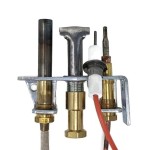Ethanol Fireplace Fuel Consumption: Understanding Usage and Efficiency
Ethanol fireplaces have become increasingly popular as a modern and aesthetically pleasing heating solution. Unlike traditional wood-burning fireplaces, ethanol fireplaces do not require a chimney or venting system, making them a versatile option for various living spaces. A key consideration when evaluating the suitability of an ethanol fireplace is its fuel consumption. Understanding the factors that influence how quickly an ethanol fireplace burns through fuel is essential for budgeting and ensuring a positive user experience.
Fuel consumption in ethanol fireplaces is influenced by a variety of variables, including burner size, flame height, ambient temperature, and the ethanol blend used. Consumers need to be aware of these influences to accurately estimate operational costs and optimize the performance of their fireplace. Failing to consider these factors can lead to unexpected fuel expenses and dissatisfaction with the product.
Understanding Burner Size and Fuel Capacity
The size of the ethanol burner is a primary determinant of fuel consumption. Larger burners, designed to produce a larger flame and greater heat output, naturally consume more fuel per hour compared to smaller burners. Burner size is typically measured in terms of its fuel capacity, expressed in liters or gallons, and its corresponding burn time. For example, a burner with a 1.5-liter capacity might be advertised to burn for approximately 4-6 hours, while a smaller 0.5-liter burner might last for 2-3 hours.
It's crucial to note that advertised burn times are often based on ideal conditions, such as a low flame setting and a stable room temperature. Real-world burn times can vary significantly, especially when operating the fireplace at a higher flame setting. Therefore, consumers should consider the burner size in relation to their desired heat output and usage frequency when selecting an ethanol fireplace.
To effectively manage fuel consumption, it’s also beneficial to understand how to properly fill the burner. Overfilling can lead to fuel spillage and unsafe operating conditions, while underfilling can result in inconsistent flame performance. Always follow the manufacturer's instructions for filling the burner and use a funnel or similar tool to prevent spills.
The Impact of Flame Height and Heat Output
The flame height of an ethanol fireplace is directly related to its heat output and, consequently, its fuel consumption. Most ethanol fireplaces allow users to adjust the flame height, typically through a sliding mechanism or a lever that controls the opening of the burner chamber. A higher flame setting will produce more heat but will also consume fuel at a faster rate.
Lowering the flame height can significantly extend the burn time of the fireplace and reduce fuel consumption. This is a practical strategy for maintaining a comfortable ambient temperature without unnecessarily depleting the fuel supply. Experimenting with different flame settings allows users to find the optimal balance between heat output and fuel efficiency.
Consumers seeking to minimize fuel consumption may consider using their ethanol fireplace as a supplemental heating source rather than a primary source, particularly in larger rooms or during colder periods. Combining the fireplace with other heating systems, such as central heating or space heaters, can help reduce the demand on the ethanol fireplace and conserve fuel.
External Factors and Ethanol Blend Considerations
External factors, such as ambient temperature and room ventilation, can also affect ethanol fireplace fuel consumption. In colder environments, the fireplace will need to work harder to maintain a desired temperature, leading to increased fuel usage. Similarly, excessive ventilation or drafts can cause the flame to burn more intensely and consume fuel at a faster pace.
The type of ethanol fuel used also plays a crucial role. High-quality ethanol fuel, specifically denatured ethanol designed for fireplaces, typically burns cleaner and more efficiently than lower-quality fuels. Look for fuels that are specifically marketed for ethanol fireplaces and that have a high percentage of ethanol content. Impurities in the fuel can lead to incomplete combustion, producing less heat and potentially creating unpleasant odors or soot.
Furthermore, some ethanol fuels are blended with additives to enhance their burn characteristics, such as creating a more vibrant flame or reducing emissions. While these additives can improve the aesthetic appeal of the fireplace, they may also impact fuel consumption. Researching and comparing different ethanol fuel brands and blends can help consumers find the best option for their specific needs and preferences, striking a balance between performance, efficiency, and environmental impact.
Regular maintenance of the ethanol fireplace, including cleaning the burner and surrounding surfaces, can also contribute to optimal fuel efficiency. A clean burner will ensure that the fuel burns evenly and completely, maximizing heat output and minimizing waste. Always follow the manufacturer's recommendations for cleaning and maintaining the fireplace.
Ultimately, understanding the various factors that influence ethanol fireplace fuel consumption enables consumers to make informed decisions about their fireplace usage and fuel selection. By carefully considering burner size, flame height, ambient conditions, and the type of ethanol fuel used, users can effectively manage operational costs and enjoy the ambiance of their ethanol fireplace without unnecessary expense.

Liquid Bio Ethanol Fireplace Fuel Ignis Clean Burning

Terraflame Bio E Bioethanol Fuel Eco Friendly Sustainable

Regal Flame Prime Ventless Bio Ethanol Fireplace Fuel 36 Quarts 1 Com

E Nrg Bioethanol The Best Fuel For Your Ethanol Fire

Xl1200 Ethanol Burner The Longest Ecosmart Fire

Portable Ethanol Fireplace Glass Top Burner Safe Indoor Outdoor Camping

Bioethanol Fuel For Fires Spirit Marine Stove Camping And Bbq Lighting Fluid Ekofuel

Grate 30 A Modern Take On The Traditional Ecosmart Fire

Liquid Bio Ethanol Fireplace Fuel Ignis Clean Burning

Regal Flame 9gfuel 9 Qt Ultra Pure Ventless Bio Ethanol Fireplace Fuel 4 X 10 In Zoro
Related Posts








